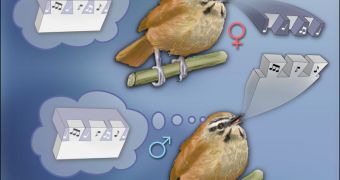Investigators at the Johns Hopkins University (JHU) say that the brain of numerous higher species is hardwired for cooperative activities. This is especially visible in humans, but scientists were recently surprised to discover clear signs of similar behavior in plain-tailed wrens.
JHU behavioral neuroscientist Eric Fortune was the leader of the research team, which published full details of its study in the November 4 issue of the top journal Science. The expert says that the new findings could be used in the development of advanced, autonomous robots.
The actual research was carried out in the cloud forests of Ecuador, on the slopes of the active Antisana Volcano. Here is the only remaining location on our planet where plain-tailed wrens can still be found.
The species is extinct at all other locations. The reason why the investigators wanted to study their behavior is that the small creatures are known for their unusual duets, which are sung alternatively by both the male and the female – as evidence in the attached image.
JHU experts say that the duet has an ABCD form, meaning that the male plays the A and C parts, while the female interjects with the B and D. “What’s happening is that the male and female are alternating syllables, though it often sounds like one bird singing alone, very sharply, shrilly and loudly,” Fortune says.
“What we learned is that when it comes to the brain and cooperation, the whole is definitely greater than the sum of its parts,” adds the expert, who is based at the JHU Krieger School of Arts and Science Department of Psychological and Brain Sciences.
“We found that the brain of each individual participant prefers the combined activity over his or her own part,” Fortune adds. He and his team made their way to where the birds live by cutting their way through the thick forests with machetes.
“The wrens made an ideal subject to study cooperation because we were easily able to tape-record their singing and then make detailed measurements of the timing and sequences of syllables, and of errors and variability in singing performances,” he adds.
The group was also able to determine that the brains of both male and female wrens activated in more intense patterns when the two were singing together, than when each of them was singing along. This suggests an extremely-positive response to cooperation in the natural world.
The new study was funded by the US National Science Foundation (NSF).

 14 DAY TRIAL //
14 DAY TRIAL //